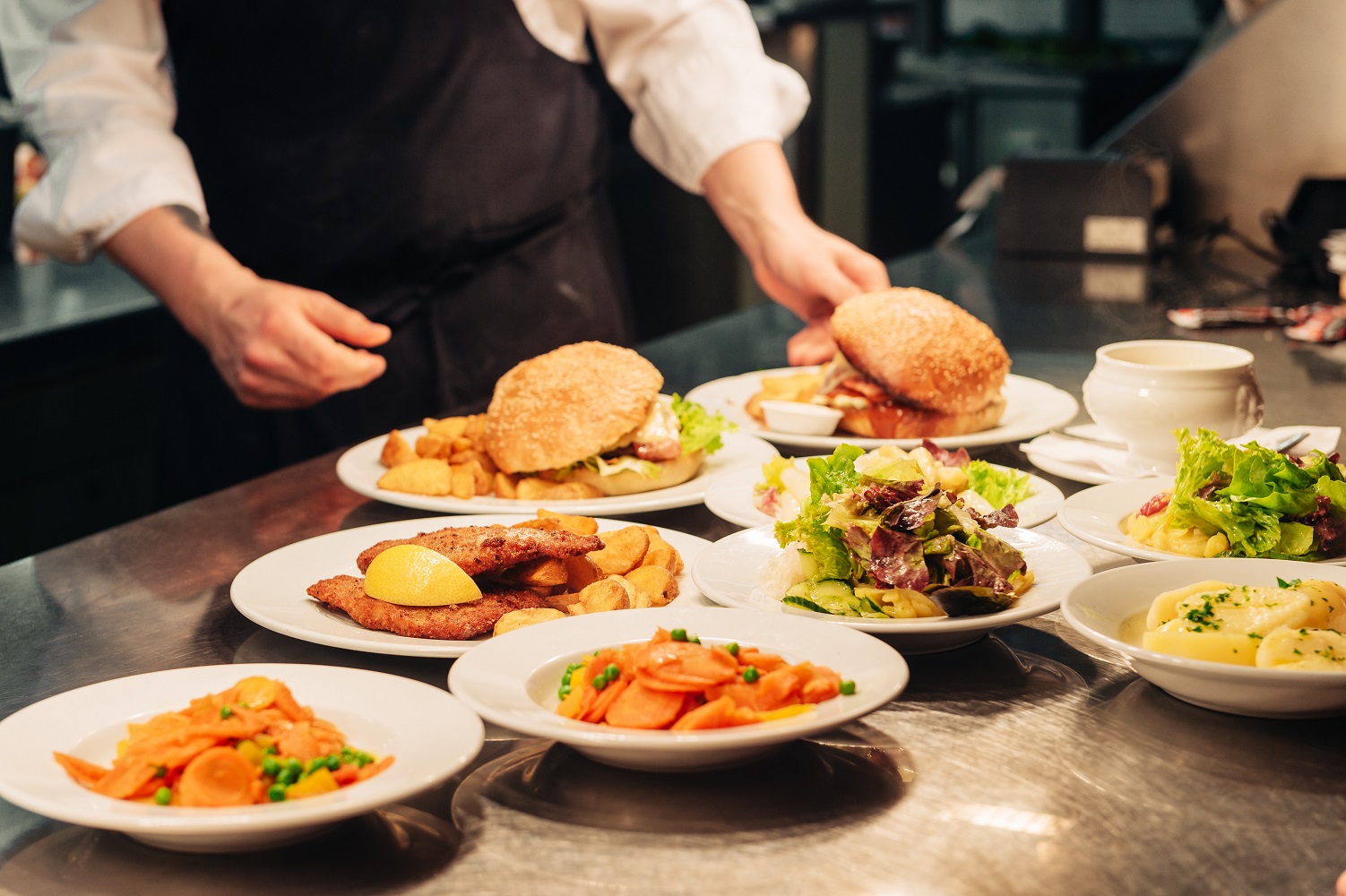Restaurant dining is a significant part of the American lifestyle. About 47 percent of people in the United States eat at a restaurant or order takeout at least once per week—and they factor in menu prices. Like with these tips, the most successful restaurants manage their food costs effectively.
The restaurant industry is vital to sustaining a healthy economy. Each month, Americans spend 70.1 billion dollars on dining out. In fact, half of the money they allocate to food is designated for casual dining, takeout food, and patronizing restaurants in general.
Since people in the US prioritize restaurant dining, food establishments need to appear attractive not only in the physical environment and the quality of their meals but in their menu prices. The cost of restaurant food can draw new and returning patrons and drive profitability.
Controlling restaurant food costs can be a tricky road to travel, but it is not impossible to navigate it well. Current food inflation and economic insecurity complicate matters; however, food cost management remains one of the core aspects of a restaurant’s success.
Tip #1: Know the Cost of Food
One of the biggest expenses for restaurants is the cost of food. Restaurant owners must know and control their food prices to bring in a profit. Strategically pricing the menu involves knowing the actual cost of food versus pricing meals based on demand or perceived value.
Food prices fluctuate, with some products increasing and others decreasing. Veal may decline in cost, but poultry prices may rise. Fresh fruit may also go up or down in cost. Tracking food prices allows restaurant owners to create menus with affordable alternatives, like egg dishes if costs are lower.
Tip #2: Forecast Sales Continually
Sales forecasting requires looking at the average sales data for the past month and using it to predict sales in the coming weeks. This task should be conducted year-round. Recent sales trends may point to one prediction, but that could quickly change if a holiday is approaching.
Missing sales data can be costly when restaurant owners fail to consider seasonal changes, upcoming holidays, community events, competitor activity, and even weather conditions. A January snowstorm can keep restaurant patrons in, causing the overstaffed restaurant to lose money.
Tip #3: Evaluate Food Grades
Ugly produce may look unappetizing, but does a restaurant owner who serves guacamole really need flawless avocados? Considering the grade of produce when creating meals is another way to manage food costs. More expensive Grade A avocados may be unnecessary, especially when mashing them.
On the other hand, the grade may matter significantly to restaurant owners. In the case of eggs, they are offered in three grades: AA, A, and B. The highest-grade egg stays together when broken into a skillet, which can be important aesthetically when chefs prepare and present egg-based dishes.
Tip #4: Portion Food Optimally
Serving the right amount of food reduces food waste and improves a restaurant’s bottom line. Assessing food portions can be done by simply monitoring the plates returned to the kitchen. If large amounts of food remain on most plates, the food is likely over-portioned.
Restaurants that overfill plates lose money. Owners might consider maintaining menu prices but cutting back on portion sizes. Also, hold the cooks accountable for measuring portions evenly. Under-portioning is equally undesirable and should be corrected to ensure profitability and customer satisfaction.
Tip #5: Conduct Inventory Weekly
Taking inventory of food and beverages every week is key to helping restaurant owners control their costs. Conducting regular inventories helps them know what is being utilized or underutilized. Knowing the usage rate is advantageous in deciding menu item costs.
Grasping the amount of inventory that comes in and goes out prevents restaurant owners from ordering excessive or too few food products. Food can spoil and it can run out. Either way, it’s important to know how fast food is being used to make a profit.
Tip #6: Control Food Waste
Similar to the importance of keeping an inventory of fresh food products, it’s critical to record how much food waste the restaurant generates. Improperly made food can be returned, and extra portions are often discarded. Managing food cost percentages requires tracking food waste.
Recycling food waste, like cooking oil, significantly helps the restaurant’s bottom line. Partnering with recycling companies that recycle oil and grease is beneficial to not only the restaurant but to the environment. Frying costs can also be reduced when food recycling businesses filter cooking oil.
Dining out is an American pastime that restaurants can leverage. Restaurant owners can take the above steps to manage their food costs and return a profit. Cutting food costs also involves regularly working with a cooking oil recycling company, such as Mahoney Environmental.
Our cooking oil collection, delivery, and recycling programs create immense value for our customers. Restaurants reduce the total cost of frying when they utilize our cooking oil filtering option. The cooking oil we recycle is transformed into renewable resources, like renewable diesel and sustainable aviation fuel.
Mahoney Environmental not only offers cooking oil filtering services, but we serve commercial kitchens in several other useful ways. Our technicians are skilled in providing quality grease trap maintenance services to ensure your equipment functions, as well as cooking oil equipment design and installation.
All your restaurant’s cooking oil needs are fulfilled by Mahoney Environmental. We deliver fresh cooking oil to keep restaurants of all sizes amply stocked and ready to fry. Cooking oil deliveries and pickups can be automated. We also monitor oil usage online, so you utilize your oil economically.
Restaurant owners who work with Mahoney Environmental to recycle cooking oil manage their food costs more effectively and preserve the environment. We’ll build a customizable recycling program to meet the ongoing needs of your business. Contact our Woodridge, Illinois, headquarters to schedule your next cooking oil collection or delivery.
We are proud to serve food establishments across the country, including Atlanta, Baltimore, Boston, Chicago, Cleveland, Columbus, Dallas, Denver, Houston, Indianapolis, Kansas City, Los Angeles, Miami, Nashville, New York, Philadelphia, Phoenix, San Diego, Seattle, Tampa,Washington DC and the surrounding areas.



 Call Us Now (800) 892-9392
Call Us Now (800) 892-9392